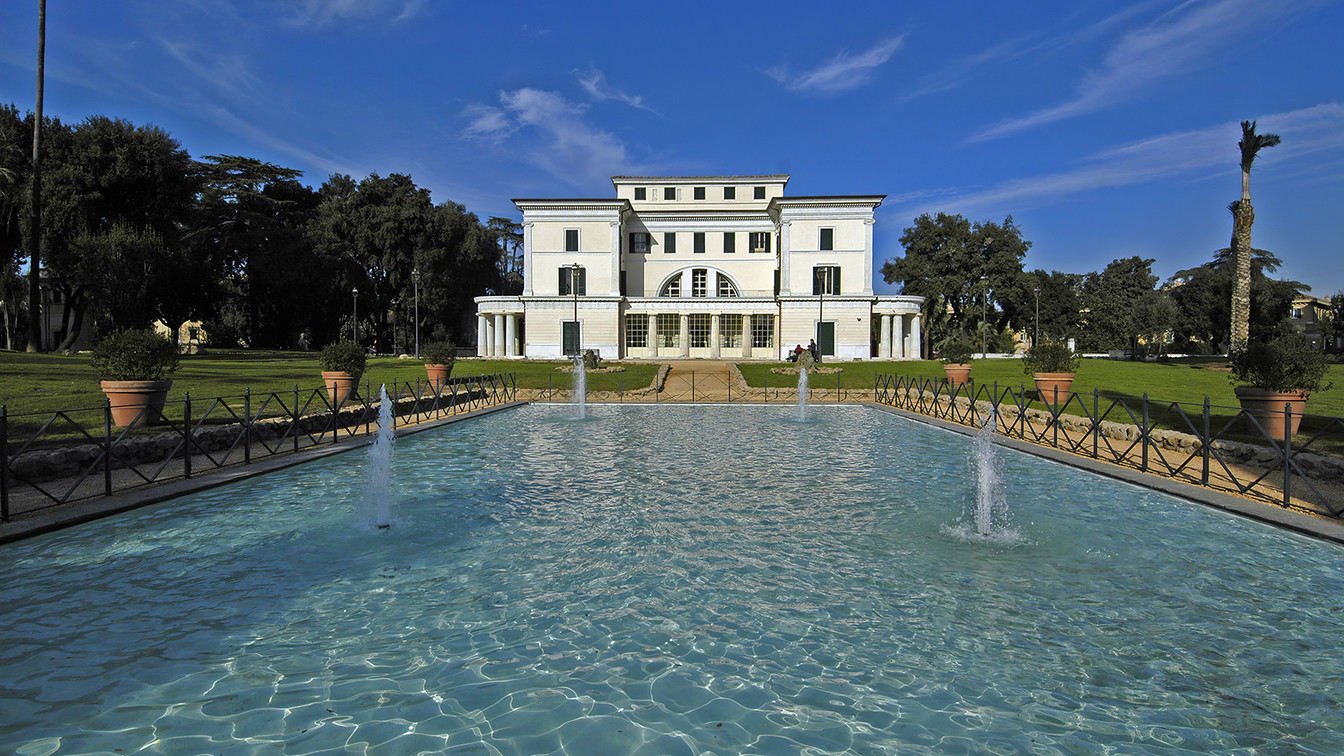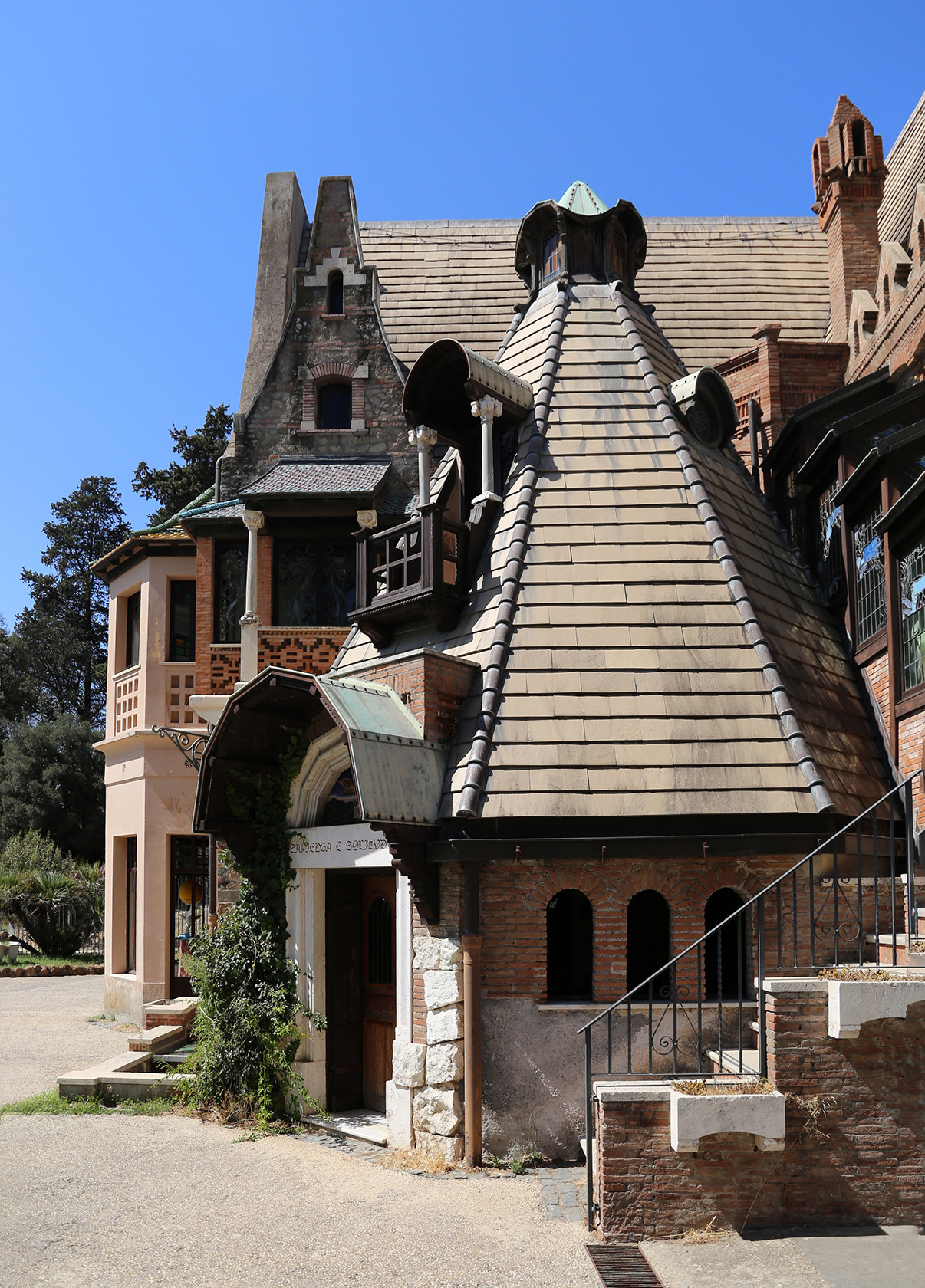

This is a love story. An inexplicable “thing”, a mystery served by all the Major Arcana, a game of faith and madness. It is an ancient, remote passion, elusive of rationality, order, method, catalog, a swirling river in flood. It all began 35 years ago, when I was strong, fast, hungry and had all that is called youth. I didn't own anything, my pen slipped out of my hand, I scribbled things in my notebook that were neither chronicle nor novel, lost in the Sturm und Drang of an unripe fruit. Villa Torlonia was perfect for being nothing; it was my garden of delights. I was still unfamiliar with the visionary power of Hieronymus Bosch; I hadn't yet discovered the grammar of green spaces; I hadn't yet ventured into Kensington gardens, where I would discover the London of Shakespeare in an unexpected encounter with nature, which is a picture that will remain in my memory forever, here. I chase after lost time, my Proustian Madeleine; ‘The Good Life’ sung by Tony Bennett accompanies me towards the spring that tomorrow, again, will catch me unawares, like a pansy on the snow, as my breath wanes.
Spring catches you unprepared, hurls you towards the “cruelest month” of April, according to T.S. Eliot,
[...] breeding
Lilacs out of the dead ground, mixing
Memory and desire, stirring
Dull roots with spring rain.
The poem hooks you in like Captain Ahab and takes you to the bottom of the sea, as you hold Moby Dick, asleep “in the loving calm of your arms”.
Spring pops up in the frost; it doesn't knock on the door. It slips in like a draft, touching you lightly. It swings sweetly through the flowers. Memory, a gust of wind. There's a place where the petals aren't arranged like soldiers with their bayonets; there's a place, that place, where the tulips don't show off their colored armor; there's a place that doesn't display the standard flowers. There is Villa Torlonia, which blossoms amidst rock, dust, grass, mud and water. Even the aridity here is not a matter of season, but of habit. The flowers ask for nothing, because they get nothing.
Villa Torlonia is the story of a multitude, a gem, the most recent among the stately homes of Rome, its architecture, its landscape, are a magnet: the bridge to another time, remote and suspended. It is the most English park in the capital, Villa Torlonia, which is why it is here that soar the vulture of decline and the eagle of greatness: Rome. After the capture of Rome in 1870, it was a military camp, a place for tents and horses; in the Ventennio fascista, it was home to Benito Mussolini, and where Edda Mussolini and Galeazzo Ciano got married. With the fall of the fascist regime, from 1944 to 1947, it was occupied by the Anglo-American command; when the municipal authority took over in 1978, it was a remnant of war.
Yesterday, today, tomorrow. Villa Torlonia is rise and fall, earth and air, pitch up and nose dive. The trees stand tall like jets of a baroque fountain, they project themselves upwards like outstretched arms to touch the sky, asking, imploring, an untamed desire. The palms are a leap and a bow offered to the grace of the architecture, to the landscape design, to the monuments, to the inventions of a painter who sweeps through with a brush armed with the desire to leave nothing as before.
The branches take off, they climb, they try to escape from below, from the uncultivated earth, from the hand devoid of intelligence, from the calendar of our days; they seek eternity, the destiny of Rome. Look at them and then close your eyes. You will see the crowns of Telperion and Laurelin, the Golden Tree and the Silver Tree, source of light and life. Tolkien would have met the elves here at Villa Torlonia.
Villa Torlonia is the daughter of eclecticism; a romantic garden in which neoclassicism is combined with spontaneous, eccentric sketches, order with disorder, creating an atmosphere of surprise. You can almost see them hovering in the air, the angels of Chagall, the architects who pass through like calendar pages, leave a mark, an idea on the ground that sprouts like a flower that never withers over time: Giuseppe Valadier, Giovan Battista Caretti, Quintiliano Raimondi, Giuseppe Jappelli, Enrico Gennari, Vincenzo Fasolo, among the many hands who worked here, adding and removing, an incessant roundabout of embellishments.
Here, the geometries and the canons become a symphony, the presto and the adagio become scherzo and ornament. At the entrance, the Casino Nobile, the obelisk, the palms straight like arrows, are a dart dipped in the sweet poison of love; a sharp, excruciating pain that becomes absence, hand in hand taking you nowhere. It is the calm and powerful wave of an andante that has the scent of the majestic, the liquid dream, muffled and singsong; a hypnosis that oscillates between Mozart's solemn Vespers and Albinoni's Adagio in G Minor.
At Villa Torlonia you do not walk, you cross. It is a bathing in waters where tropical flowers dance, here the West kisses you and leaves you
At Villa Torlonia you don't walk, you cross. It's like bathing in waters where tropical flowers dance; here, the West kisses you and leaves you, the pistils bow while distant worlds exhale; the East is a gate that opens wide. A suspended universe where the clamor of the city cannot reach. Far away, the sirens, the metallic chaos, the broken screams, the daily torture of language, the stumbling tourists, the fatigue of the incomprehensible coming and going of a metropolis always on the verge of falling and yet alive, shining, wounded, on its knees and stubbornly inside the story.

Torlonia is the fantastic that sparkles in the eyes, a world of fairies and enchantments, the triumph of appearing, the first kiss. The Casina delle Civette, a miracle, with its esoteric radiations, the stained-glass windows designed by the graphic genius, Duilio Cambellotti, a journey among the grape shoots and vine leaves, a flight of swallows, the domain of the owls. Mosaic windows, slate roofs, enameled terracotta tiles, spaces that lead to other dimensions, stucco, wood, majolica, fabrics, a mythological, esoteric ship: let's go, my captain!
Villa Torlonia is the turning of hands without the ticking of time: it is enchantment. You stand there, waiting for another surprise. From the Casina delle Civette, the path leads down and opens towards the Campo da Tornei, where you can imagine Ariosto narrating “women, cavaliers, arms, loves,” while on the left appears the fairytale distant past, the Serra Moresca , and the story turns the page towards Arab lands, deserts, oases, the Alhambra, an Andalusian guitar harmony, the adagio of the ‘Concierto de Aranjuez’, which composer Joaquín Rodrigo described with the words "agile as a butterfly and elegant as a veronica.”
Here, Villa Torlonia opens into a desert of luxuriant imaginary, evocations of Arab adventures; it is the land of Thomas Edward Lawrence, we are on the back of the camel, on the road to Aqaba. Mile after mile, the mind runs towards other narratives of Islam, the thousand and one nights of the Serra Moresca, imprisoned and freed, offended and honored, yesterday behind a gate, oppressed by a net, today a splendid spice-scented epiphany.
Villa Torlonia is a passing of the hands without the ticking of time, it is enchantment. One is suspended, waiting for another surprise.
I stop in front of the Marian aedicule and turn to look back: the ground becomes an esplanade of wild grass with towering pines, cedars, holm oaks and palms trees. I walk around the ring of the park, the ugly administration tries to overwhelm the beauty, stop the contemplation; the circulars and resolutions lurk in the work that is always in progress, in the never-finished. It is the forced vacuum of a city in which the magnificent resists and still exists thanks to an unknown, superhuman force, the spirit of Villa Torlonia, the building site of the imagination
The path climbs back up to the Casa delle Civette; on the left, another escape route opens up, among the bamboo canes. Here, there appears the Far East, the Indochina of journeys of no return, of fevers, snakes, warriors and silken-haired lovers. A space-time leap into the distant past that leads to the entrance of the Casino dei Principi, guarded by two winged sphinxes. A light and a shadow of Egypt, a mystery of tombs, of the sacred, of flying creatures that guard magical doors, passages to the underworld, home of very powerful gods and (im)mortal rites. Villa Torlonia is splendid and ruinous romanticism, a ray of the esoteric and its symbols; it is pagan divinity and kingdom of heaven, a mystery of logos, faith and enlightenment. At Villa Torlonia, for an infinite instant, you find yourself where you most want to be: in the loving calm of your arms